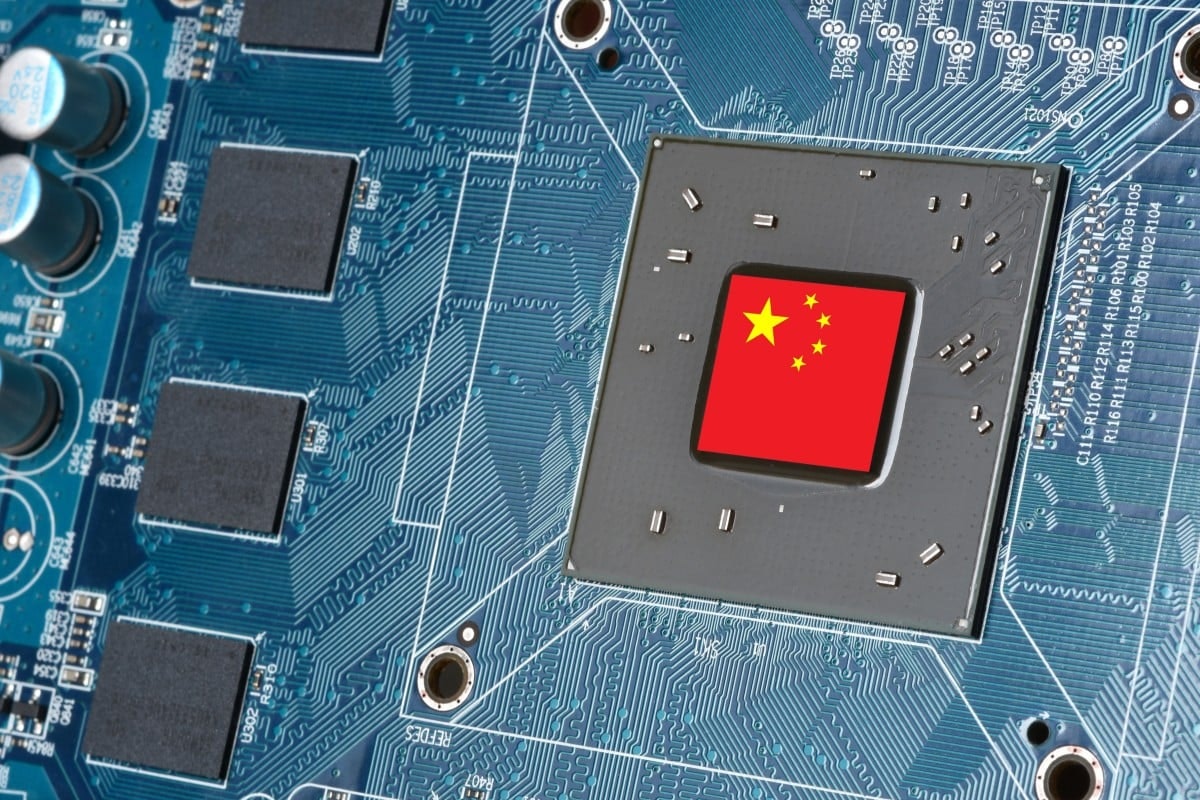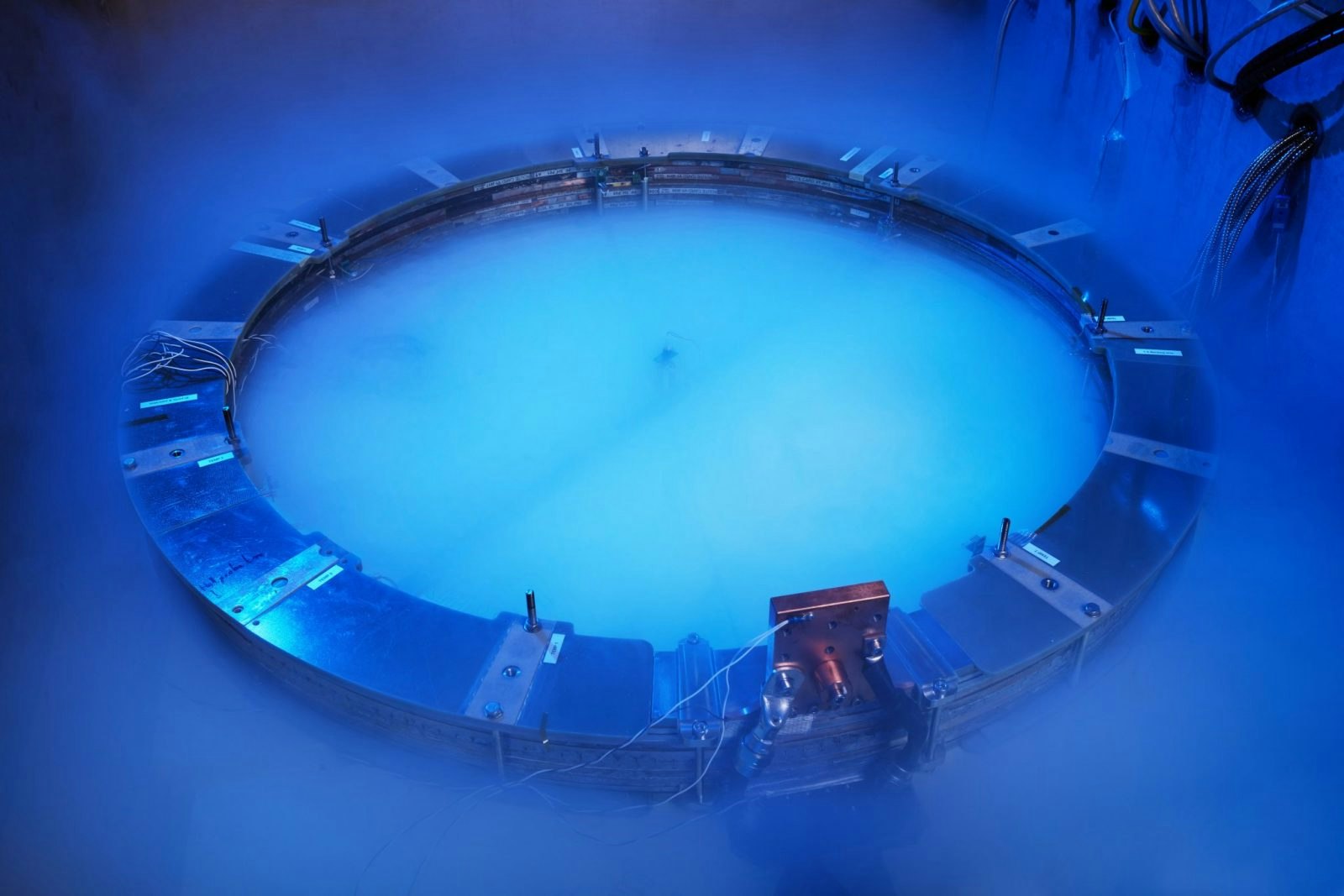Just off north London’s dusty Caledonian Road, a stone’s throw from a Turkish cafe full of railway workers, a yoga studio and a boarded-up florist, the future of quantum computing is taking shape.
Quantum Motion’s lab is in an unremarkable new building next to a gym. The team has recently decorated the windows with decals bearing slogans like “100 times cooler than outer space” — a reference to the -273ºC temperature of the dilution fridges that its quantum processors need in order to work. But other than the stickers, this could be the office of a small law firm or a management consultancy.
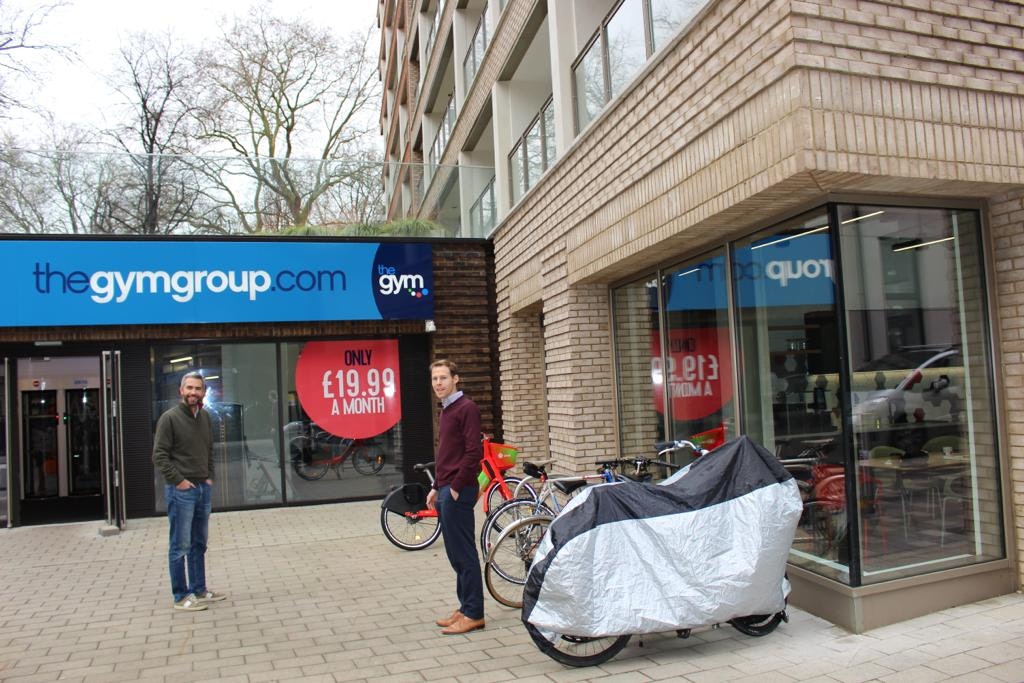
That’s kind of the point, though.
“We wanted to show that you can build a quantum lab in an ordinary building like this,” says John Morton, professor of nanoelectronics at UCL and cofounder of Quantum Motion.
Many of the world’s quantum computers are still in university labs (or in the specialist labs of the big tech companies) but Quantum Motion wanted to create a lab outside of that, Morton says.
“It is a big step to go into a commercial unit like this.”
The lab, officially opened on Monday by Theo Blackwell MBE, chief digital officer for the Mayor of London, will be the most substantial low-temperature facility of any UK quantum company to date. It will employ 25 full-time staff, including quantum theorists, physicists and integrated circuit engineers.
Eventually, Quantum Motion is hoping to make a quantum computer that is the size of a normal, 19-inch computer server rack, that doesn’t need housing in specialist facilities. We’re still some way from that — Quantum Motion’s particular branch of quantum computing, based on single electrons isolated on a silicon chip, is at an early stage and unlikely to be in real use until much later in the decade.
But a tour around the Quantum Motion lab is a good illustration of the direction of travel for this sector.
Gold-plated
Initially, Morton and James Palles-Dimmock, cofounder and COO, are more excited about showing me how their brand new office has a separate tap that dispenses fizzy water. But eventually, we do go through to the lab to see the gold-plated dilution fridge that is at the heart of most quantum computers.
This gold chandelier is what takes the temperature of a qubit down to close to absolute zero, so that there is as little interference or “noise” as possible to disturb the qubit.
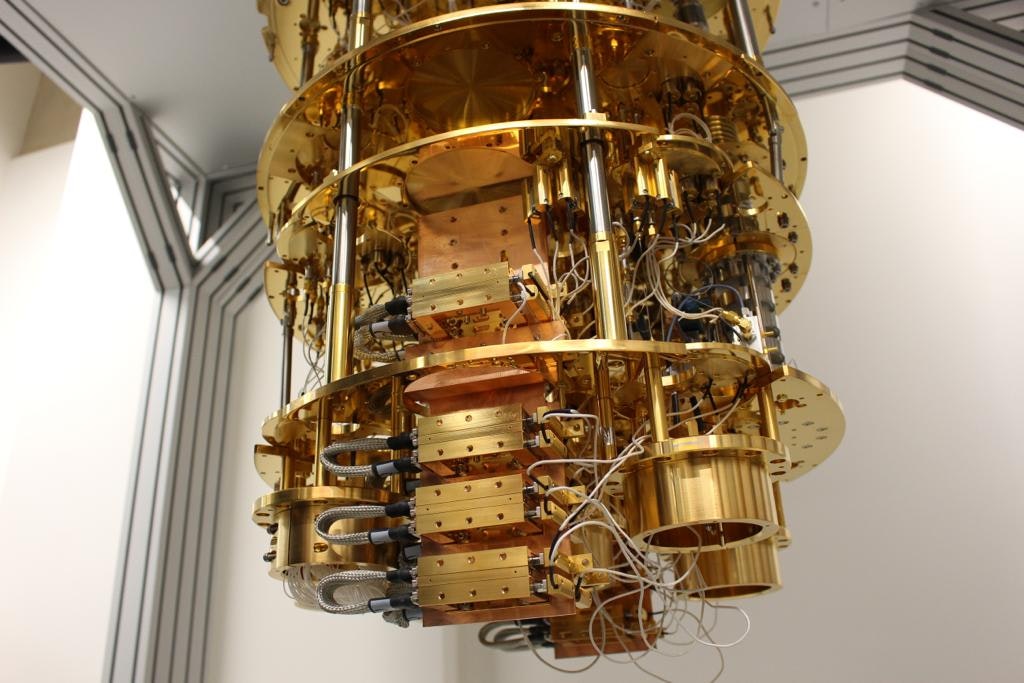
Each tier of the chandelier takes the temperature down a further notch, until the very bottom layer is a -273ºC. That is colder than outer space, close to absolute zero.
The quantum processor sits inside a golden cylinder that is then attached to the bottom of the chandelier. This is the business end of the quantum computer, where the computation happens.
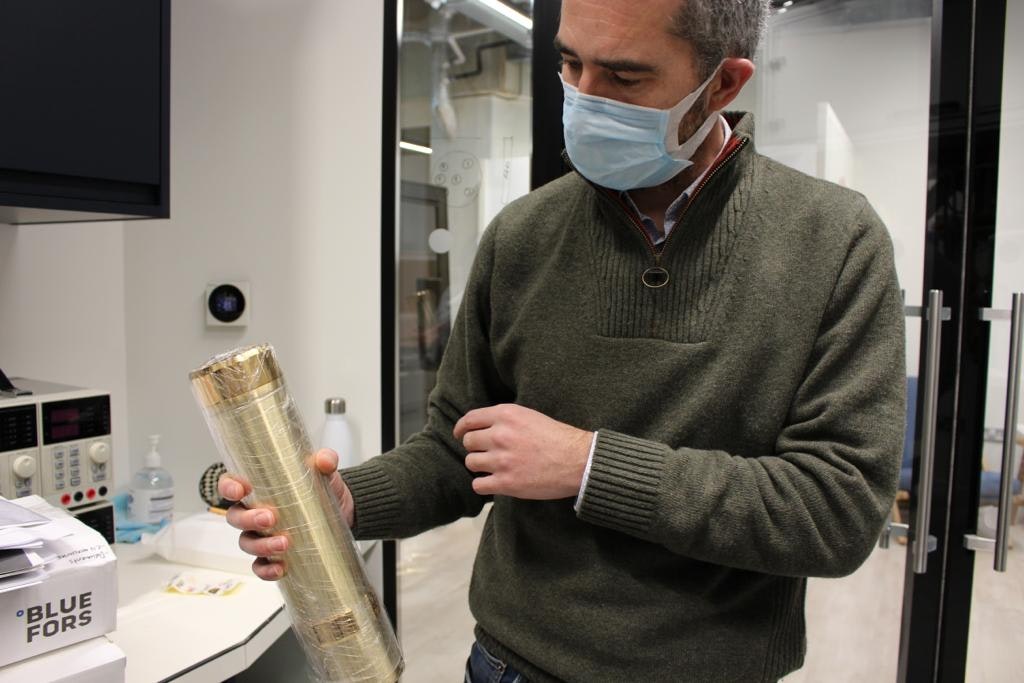
Sifted was not allowed to photograph the processor chip, but I can tell you that it’s pretty unremarkable anyway. It looks like a normal silicon chip with a coin-like area in the middle where the qubit is located.
They did allow us to share this image of a chip created for them by CEA Leti, the specialist microelectronics research institute.
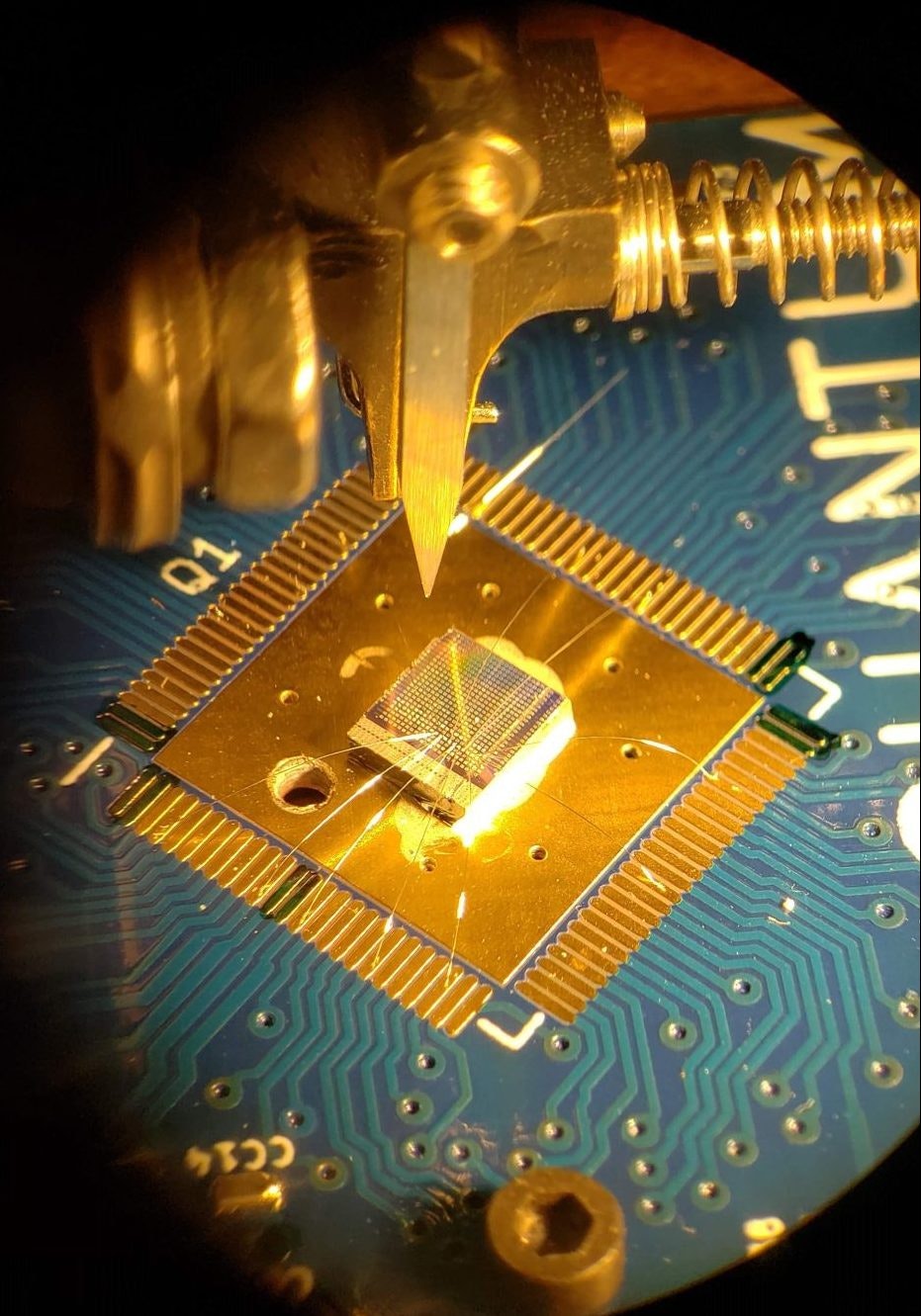
When the quantum computer is working, the gold chandelier is covered in white metal. You obviously can’t touch any part of the inside of machine directly when it is cold, so the black tube in the picture, next to the machine, has been designed specially to change the cylinders that hold the chips. This uses an airlock technology similar to the way a spacecraft would dock with the International Space Station.
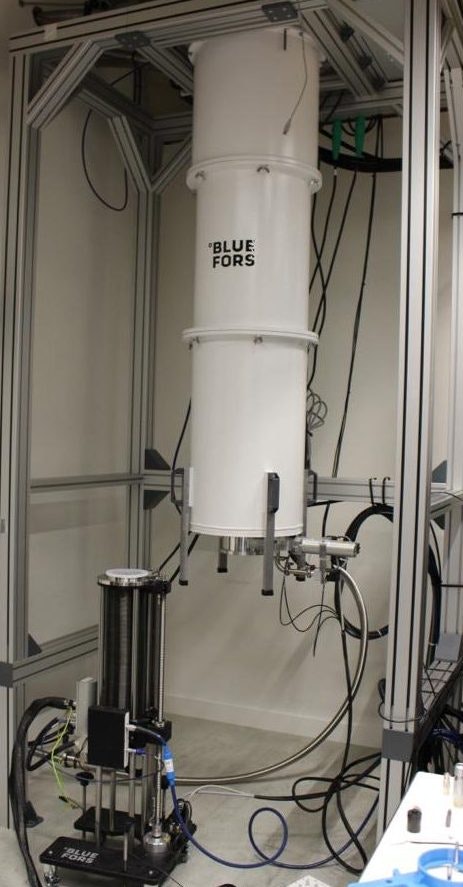
100x cooler than outer space
Cooling to this temperature takes some specialist equipment. The adjacent room is full of equipment pumping liquid helium in to cool down the quantum computer. It is noisy, a constant high-pitched sucking and wheezing like an alien about to asphyxiate.
And on another wall is another set of pipes that is helping dissipate the heat that is sucked out of the system.

Even though Quantum Motion envisions that one day it will pack thousands of qubits onto a single chip, they will still need to be kept cool, so this cooling equipment is likely to remain with us. This kind of quantum computer won’t be easy to move and will need some planning to use. It can take 24 hours to get the dilution refrigerator down to the right temperature — although the machine could potentially run for months once there.
Most of the major strands of quantum computing require this kind of extreme cooling, though some alternatives like photonics and diamond-based quantum computing don’t.
This is part of what makes the set-up costs so high — a lot of the £8m seed funding round that Quantum Motion raised in 2020 is going towards this multimillion-pound lab. And it means that one of the safest bets in quantum computers right now is investing in Bluefors, Oxford Instruments and Leiden Cryogenics, who all make these refrigeration units.
The eco option?
Surprisingly, the cooling equipment requires only a modest amount of power — the machines use more energy than the average UK home but not by a ridiculous amount, says Palles-Dimmock. The power draw of the machines is 10 kilowatts when it is running (an electric kettle will use around 2 kilowatts, but obviously in shorter bursts).
The set-up in Quantum Motion’s lab runs through this fairly modest-looking power supply.
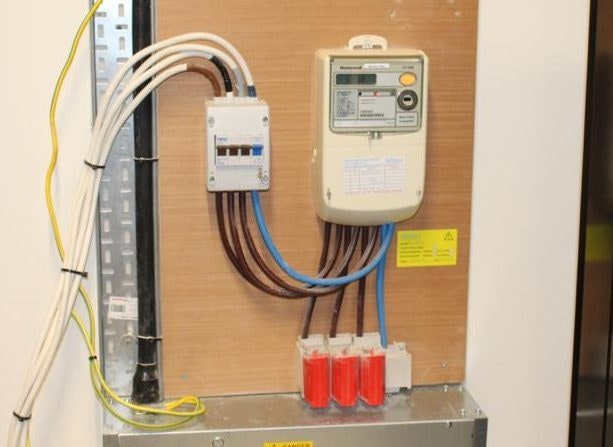
The potential energy savings of moving to quantum computers are something that Morton and Palles-Dimmock are keen to talk about.
In 2019 when Google demonstrated the supremacy of quantum computers (for a very specific calculation), it not only performed the operation faster — in three minutes and 20 seconds, compared to the 10,000 years it would have taken on the most advanced classical computer. It also did it using much less power — Google calculated around 26 kilowatts as a worst-case scenario, or seven orders of magnitude (10m times) less than the energy needed by a classical supercomputer.
There is growing concern about the carbon footprint of the world’s tech infrastructure — data centres emit more carbon than the pre-Covid travel industry — and usage is growing. ”Think about how much energy a data centre uses every time you ask Siri something,” says Palles-Dimmock — not to mention cryptocurrencies, which need to be constantly updated and verified using power-hungry computations.
Quantum computers could be a way of dramatically slicing the power consumption of the tech sector.
The silicon approach
Quantum Motion is one of a handful of quantum computing companies, alongside Intel and Silicon Quantum Computing (the company that John Martinis left Google’s quantum team to join), developing quantum computers based on silicon chips.
It makes sense to develop something that can plug straight into the existing silicon chip industry, says Morton. Quantum Motion had a breakthrough in 2021 in developing a quantum processor that sits on a standard 300mm wafer, and is now working to standardise it so that it can be made by any of the chip foundries that already supply the classical computing industry.
The trick to silicon-based quantum computing is to isolate a single electron from the reservoir of electrons on a transistor, pulling it underneath a gate and measuring its spin, whether it is facing up or down. That can be read as an electronic signal — ”capacitance” in technical terminology.
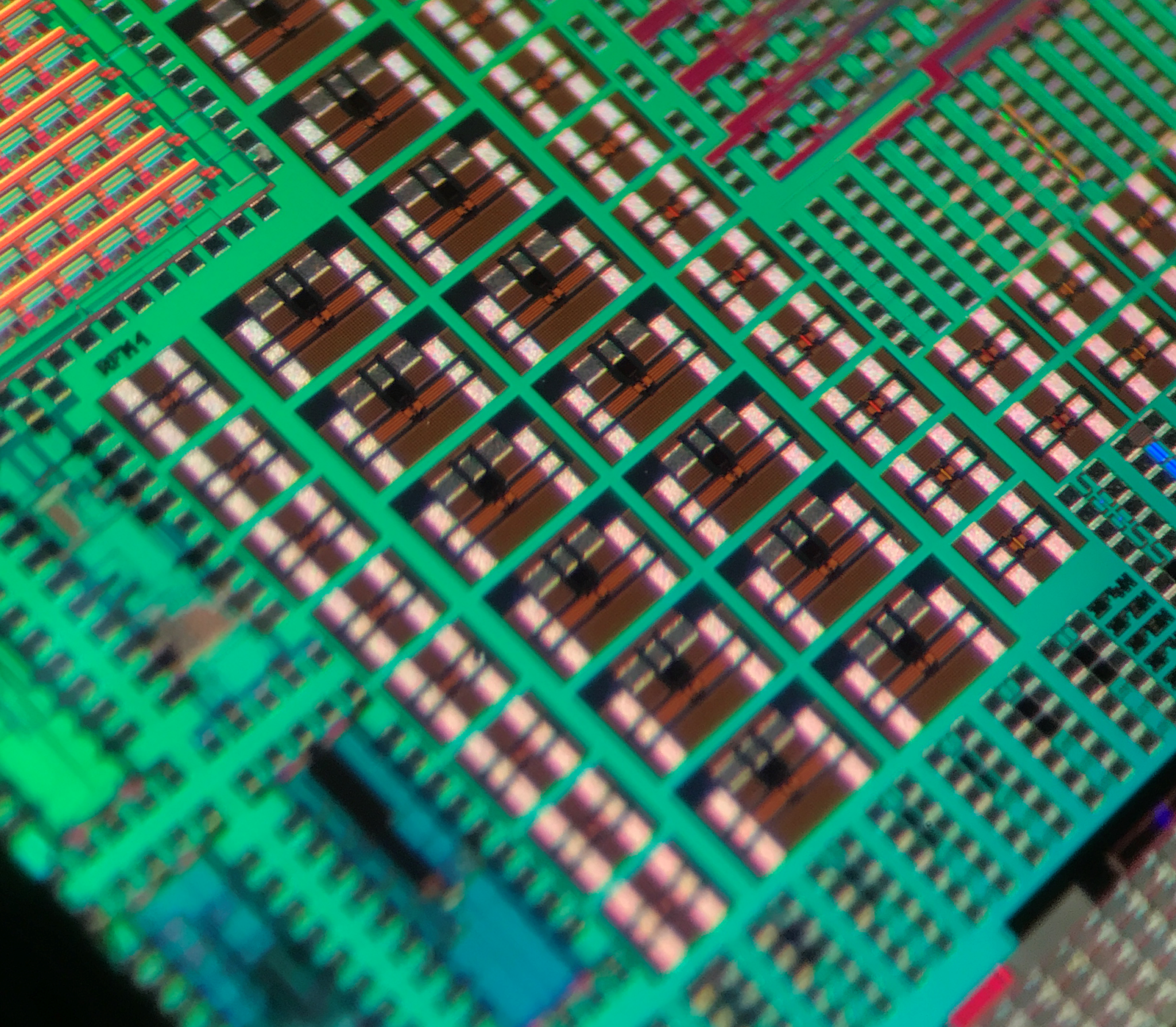
Morton says he looked seriously at other forms of quantum computing before concluding that the silicon approach was the most viable. But it wasn’t just about being able to plug into a ready-made chip industry. Silicon has other benefits too.
“When we demonstrated single electron control on a 300mm wafer there was a surprise for us. The electron remained in the spin state for nine seconds,” says Morton. Qubits usually retain their spin states for fractions of a second, so that's an extremely long time in quantum terms.
“We were lucky because silicon is a magnetically quiet material,” Morton says.
You can also fit thousands of qubits onto a silicon chip the size of a stamp, making it easier to scale up the calculating power of the processors. With many other forms of quantum computer, scaling up would mean building facilities the size of a football field (unless scientists/startups can come up with clever ways of miniaturising parts, which they are working on).
When does quantum computing get useful?
The downside of the silicon approach is that it is relatively new. While some superconducting quantum computers are already up and running with 100 qubits, Quantum Motion has so far only demonstrated one qubit.
“We’re not going for the quickest way to get to a 100-qubit machine. People are trying to build a 100-qubit machine but no one knows what to do with it,” says Morton. “We’re looking to be the first to create a useful quantum computer.”
That won’t be any time very soon, says Morton. “The end of the decade is when we will have a machine that is valuable.”

